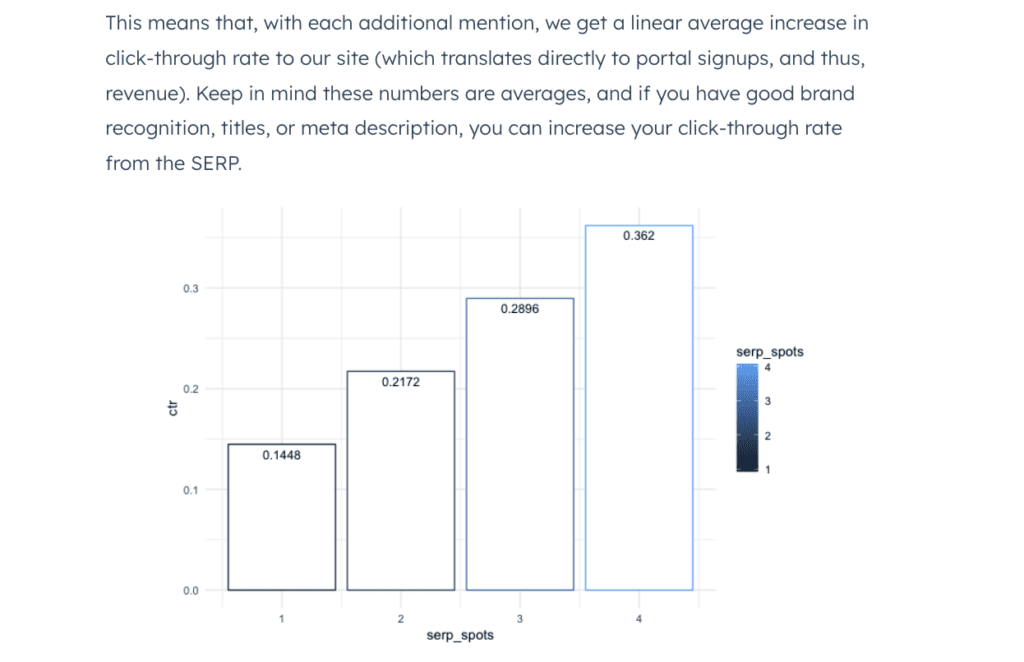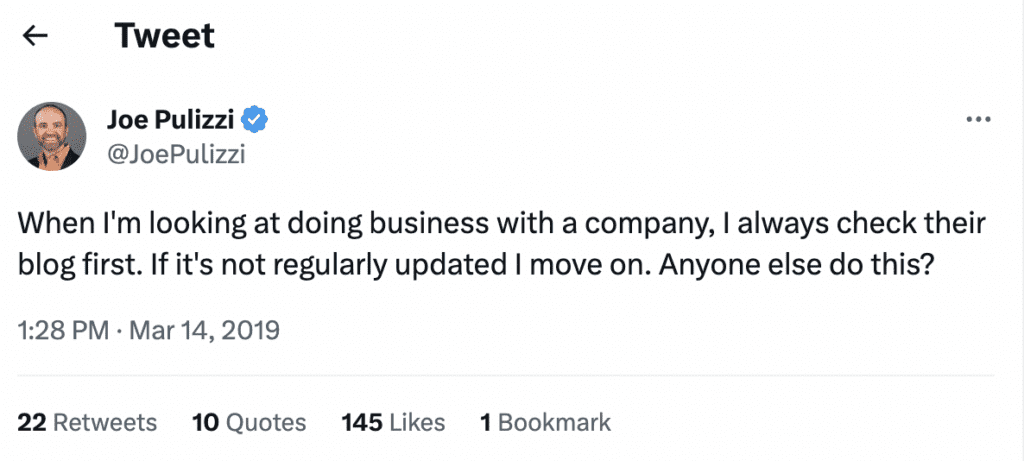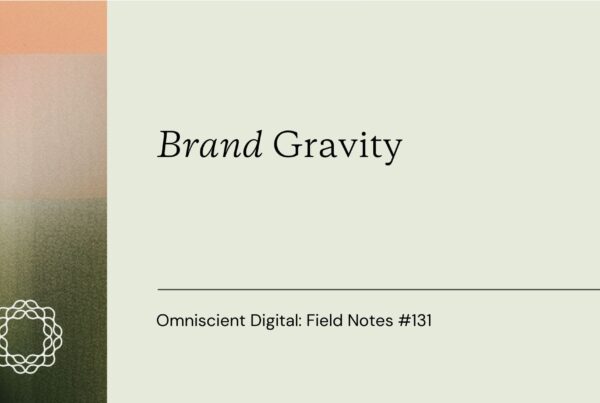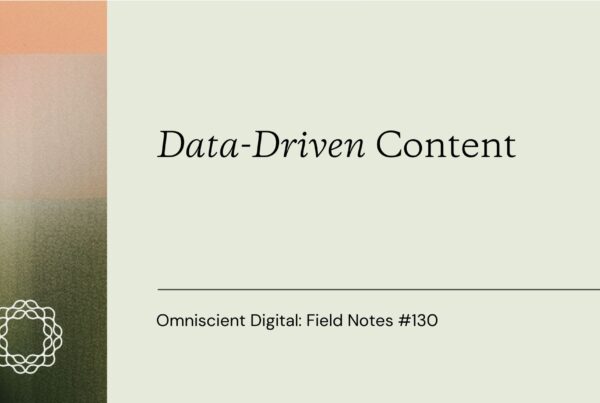
“If all you have is a hammer, everything looks like a nail.”
Call it the Law of the Instrument, the Einstellung effect, or just plain old solutionism, but we humans (and even our generative robot counterparts) have a hard time breaking outside of our well-worn box.
We start with what we know because it’s familiar or salient, and we work backward into finding a problem for our answer.
Before we define the right problem, we jump right into finding answers, often trying to force a square peg into a round hole.
The personalization promise
My background, as some of you know, is in growth and experimentation.
When I was running experimentation at a well-known company, all the executives wanted to scale out web personalization. Specifically, they wanted to do account-based marketing (ABM) personalization, targeting key accounts in coordination with the sales team.
There’s absolutely nothing wrong with personalization.
Personalization is awesome, fun, and often useful.
But personalization wasn’t solving a problem anywhere near what would have moved the needle for the company, and there were several structural obstacles to doing personalization effectively, including:
- Their data infrastructure couldn’t support proper experimentation
- Their product marketing was loosely organized, which led to highly variable messaging
- They barely had enough traffic to run simple A/B tests
But because they had the personalization solution in their heads, they were adamant about using it—even if that meant they needed to work to find a problem that it could solve.
No one is immune to solutionism, myself included.
A few years back, I was learning R because I thought it would help me level up as an analyst and growth professional. So I tried to apply it to every problem I could, including building user personas using clustering algorithms and even using it to produce simple data visualizations when Excel would have been 5X easier:

While doing this was useful for me to learn a new skill, in these cases, I was trying to fit my solution into a problem area. There were more efficient ways I could have solved the problems.
Generative AI: God or Clever Hans?
Generative AI is, proverbially, the new personalization for marketers. Many of us, right now, are scrambling to find problems to solve with our new shiny solution.
But the vast majority of people are looking at generative AI the wrong way simply because they’re failing to ask the right questions or even frame the problem at all before jumping to solutions.
There are two extremes: one side looks at it as THE single solution to their marketing or business woes, and the other side looks at it as a nonfunctional nothing-burger that will never replace us no matter what(!!).
The first side treats it like a God, the other like Clever Hans (a mere parlor trick).
In reality, it’s neither of these. It’s an incredibly powerful tool that helps us solve many problems, but not all problems.
If you’re an agile and scrappy marketing team that has found a content strategy that resonates, yet you’re struggling to increase the pace of production, generative AI can be an amazing solution. It can round out the jagged edges of your editorial efforts, automate a large portion of the content outline process, and even help you fill in a decent amount of templatized content.
But if the real problem you have is a lack of resonance with your target audience, or unclear messaging and a mixed idea of who your target customer even is, generative AI is probably not the solution for your problem.
Failing to see any utility from generative AI means you’re probably not framing the right questions. After all, the interface is literally a text prompt that forces the user to identify the desired output. As Clayton Christensen said, “Every answer has a question that retrieves it.”
On the other side of the spectrum, people are using generative AI for problems that fundamentally have no business or personal value, thus wasting a lot of time and enterprise value when they apply it to their businesses.
In other words, do you need to repurpose a podcast in 100 different ways if the podcast itself sucked in the first place? Is programmatic SEO really the silver bullet solution that’s going to break you from stagnation?
All of this is to say, you should focus more of your time on finding the right problem or the right question before you jump in bullishly with your solution or answer.
Generalists or channel experts
Specialists are more likely than generalists to become solutionists.
I have no evidence for that, but I’m writing the newsletter, so I get creative license to make these claims.
I’m a generalist. To an extent, I’ve specialized in SEO and experimentation. But I’m not in the top 1% of either of these. I read across the spectrum, from evolutionary biology to game theory, statistics, and environmentalism. I borrow lessons from different fields to apply them to the content marketing discipline.
Being a generalist obviously has its downsides, especially if you want to climb a career ladder cleanly.
But especially during times of uncertainty erupting with technology advancements, economic turbulence, and dynamic consumer behavior changes, it helps to be agile in how you approach problems.
If, for instance, you identify as a specialized copywriter working on landing page copy for SaaS startups, it’s likely you’ll view generative AI and its utility only under this use case. It’s like Streetlight Effect:
“A policeman sees a drunk man searching for something under a streetlight and asks what the drunk has lost. He says he lost his keys and they both look under the streetlight together. After a few minutes, the policeman asks if he is sure he lost them here, and the drunk replies, no, and that he lost them in the park. The policeman asks why he is searching here, and the drunk replies, ‘this is where the light is.’”
Illuminating as that the SaaS landing page copywriting use cases may be, there’s an entire parking lot of opportunities and use cases unexplored because of this narrow spotlight.
No shade to Joe Pulizzi. I’ve learned a ton from him and Content Marketing Institute. But this is a hammer in search of a nail:

I’m not saying you have to become a generalist, but it may help to step back and think like one.
I’ll leave you with this quote from Ovan Varol in his book “Think Like a Rocket Scientist.”
“Often, we fall in love with our favorite solution and then define the problem as the absence of that solution. In each case, we pursue technology for the sake of technology. We lose the forest for the trees, the purpose for the method, the function for the form.
This approach mistakes tactics for strategy. Although the terms are often used interchangeably, they refer to different concepts. A strategy is a plan for achieving an objective. Tactics, in contrast, are the actions you take to implement the strategy.”
Want more insights like this? Connect with me on LinkedIn.
Recommended Reads
- Are You Solving the Right Problems? – HBR research on problem identification at enterprises. 85% strongly agreed or agreed that their organizations were bad at problem diagnosis, and 87% strongly agreed or agreed that this flaw carried significant costs.
- Why AI Will Save The World – whether right or wrong, when P Marca writes an essay, I read it and take it seriously. This is an optimistic take on the future of AI and society.
- How Constraints Force Focus in Marketing, Becoming a First-Time Manager, and Anti-Specialization for a Diverse Marketing Career with David Fallarme – a very good breakdown on our podcast from David Fallarme on why he deliberately chose not to specialize.


